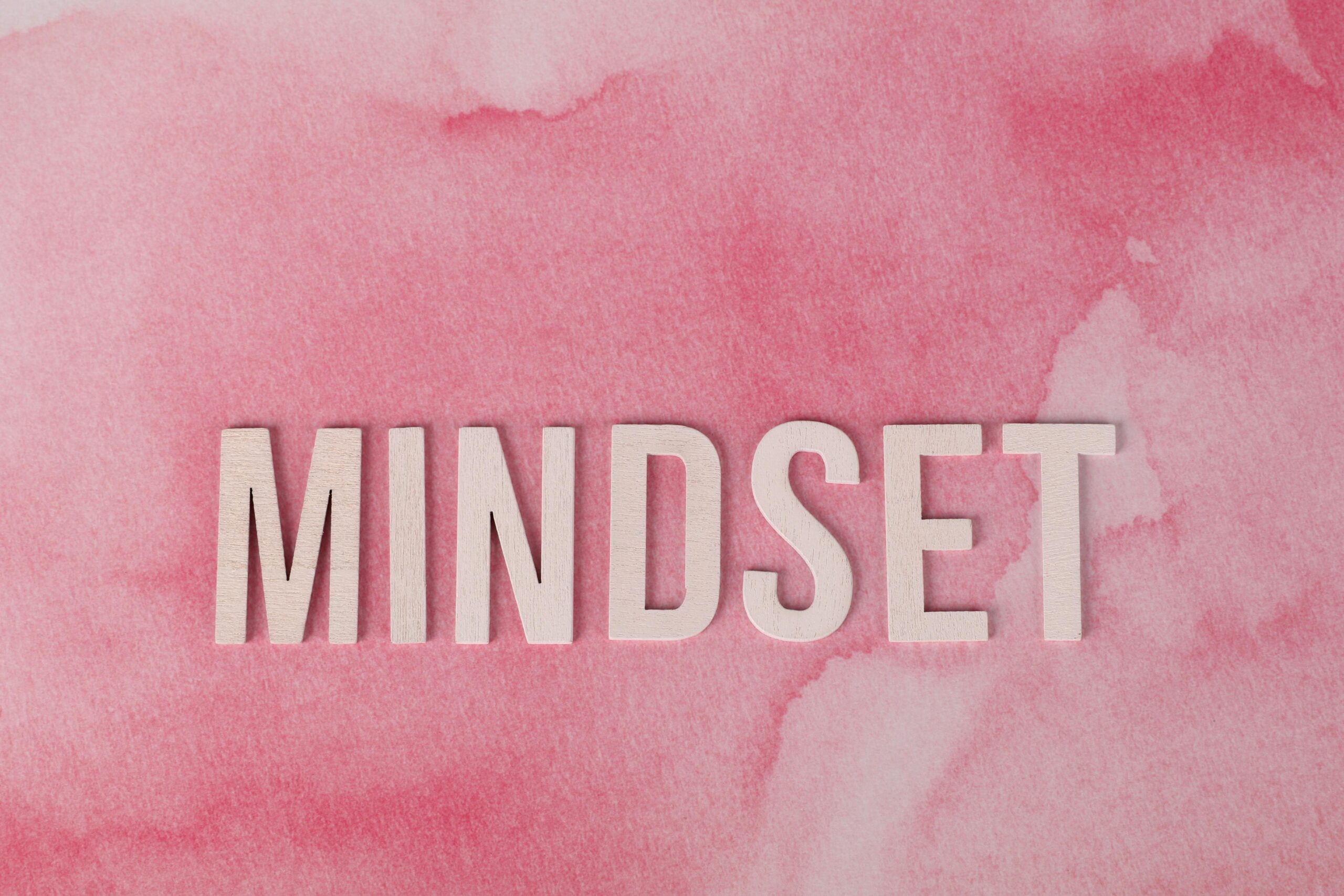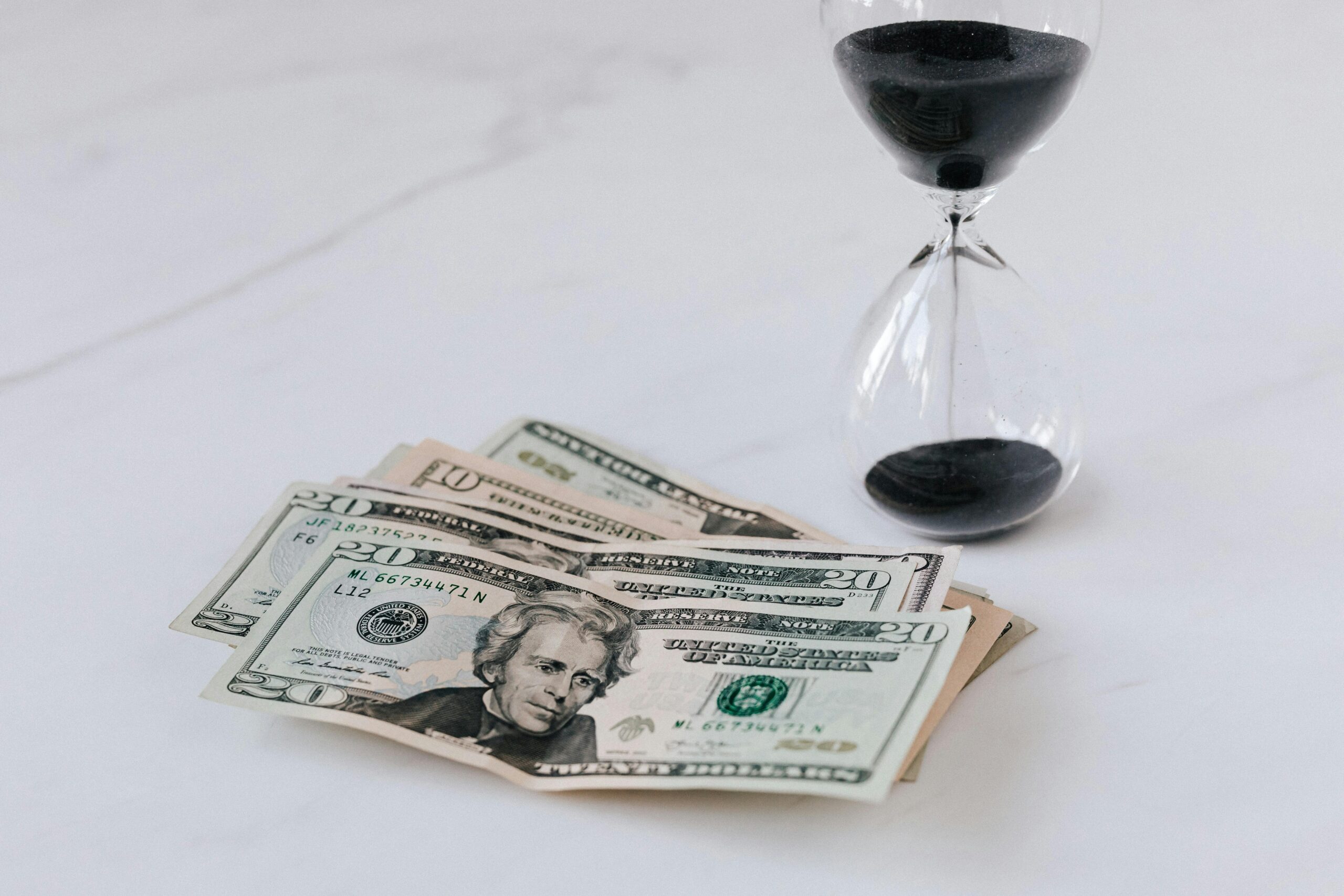Your mind is constantly playing tricks on you, especially when it comes to taking risks and making decisions that could change your life.
We’ve all been there: standing at the crossroads of a potentially life-changing decision, feeling our hearts race as we contemplate whether to play it safe or take a leap. The fear of losing what we have often feels more powerful than the excitement of what we might gain. This psychological phenomenon isn’t just in your head—it’s a well-documented cognitive bias called loss aversion, and understanding it could be the key to unlocking better decision-making and calculated risk-taking in your personal and professional life.
Loss aversion is one of the most powerful forces shaping human behavior, yet most people have never heard of it. Discovered by psychologists Daniel Kahneman and Amos Tversky, this principle suggests that the pain of losing something is psychologically twice as powerful as the pleasure of gaining something equivalent. In other words, losing $100 feels approximately twice as bad as finding $100 feels good.
🧠 The Science Behind Why Losses Hurt More Than Gains Feel Good
The roots of loss aversion run deep in our evolutionary history. Our ancestors survived not by seeking maximum gains but by avoiding catastrophic losses. In the wild, missing an opportunity to gather extra berries might mean a slightly less satisfying dinner, but losing your food supply to a predator could mean death. This asymmetric response to gains and losses became hardwired into our neural circuitry.
Modern neuroscience has confirmed this ancient programming. Brain imaging studies show that losses activate different regions of the brain than gains do. Specifically, potential losses trigger increased activity in the amygdala and the striatum—areas associated with negative emotions and threat processing. Gains, meanwhile, produce a more modest activation pattern. This neurological reality means that our brains are literally designed to feel losses more intensely than equivalent gains.
Research has consistently demonstrated that people require potential gains to be approximately twice the size of potential losses before they’ll consider a bet worthwhile. If you offer someone a coin flip where they could lose $50 or win $50, most people will decline. But offer them a chance to lose $50 or win $100, and suddenly the proposition becomes attractive. This 2:1 ratio appears remarkably stable across cultures and contexts.
How Loss Aversion Sabotages Your Risk-Taking Potential
Loss aversion doesn’t just influence coin flips and gambling decisions—it permeates every aspect of our lives, often holding us back from opportunities that could significantly improve our circumstances. Understanding how this bias manifests in real-world situations is the first step toward overcoming it.
Career Decisions and the Golden Handcuffs Phenomenon 💼
Consider the classic career dilemma: staying in a comfortable but unfulfilling job versus pursuing a passion project or entrepreneurial venture. The potential losses loom large—stable income, health benefits, professional reputation, and social status. Even when the potential upside is substantial, loss aversion keeps countless people locked in positions that don’t serve their long-term interests or happiness.
This “golden handcuffs” phenomenon is a textbook example of loss aversion in action. The tangible nature of what you’re giving up (a regular paycheck, office perks) feels more real than the abstract possibilities of what you might gain (personal fulfillment, unlimited earning potential, autonomy). Your brain weighs these unequally, leading you to overvalue the status quo.
Investment Mistakes and the Disposition Effect
In financial markets, loss aversion manifests as the “disposition effect”—the tendency to sell winning investments too quickly while holding losing investments too long. Investors feel the pain of realizing a loss so acutely that they prefer to hold onto declining stocks, hoping they’ll bounce back, while simultaneously taking profits on winning positions prematurely.
This behavior is entirely backward from a rational investment perspective. Good investors should let winners run and cut losses short. But loss aversion flips this logic on its head. The psychological pain of admitting a mistake and crystallizing a loss becomes more important than maximizing returns. Studies show this behavior costs investors significant returns over time.
Relationship Patterns and Settling for Less
Loss aversion affects intimate relationships too. People often stay in mediocre or even unhealthy relationships far longer than they should because the fear of losing companionship, shared history, or the comfort of familiarity outweighs the potential for finding a more compatible partner. The known quantity of an imperfect relationship feels safer than the uncertain prospect of being alone or starting over.
Reframing Risk: The Mental Shifts That Transform Decision-Making 🔄
The good news is that once you understand loss aversion, you can develop strategies to counteract its influence and make more balanced, rational decisions about risk. The following mental frameworks can help you evaluate opportunities more objectively.
The Regret Minimization Framework
Amazon founder Jeff Bezos famously used what he called a “regret minimization framework” when deciding whether to leave his lucrative Wall Street career to start an online bookstore. Rather than focusing on what he might lose (salary, career trajectory, stability), he asked himself: “When I’m 80 years old, will I regret not trying this?”
This temporal reframing shifts your perspective from immediate losses to long-term regret. It’s often easier to tolerate the risk of financial loss than to accept the certainty of never knowing “what if?” By projecting yourself into the future and looking backward, you can sometimes see past the magnified fear of near-term losses.
Opportunity Cost Analysis
Every decision to maintain the status quo has a hidden cost—the opportunities you’re forgoing by playing it safe. Loss aversion makes us hyperfocus on what we might lose while remaining blind to what we’re already losing through inaction.
Practice making opportunity costs explicit. If you’re considering whether to invest time learning a new skill, don’t just think about the cost (time, energy, potential failure). Also consider what you’re losing by not learning it: career advancement, increased earning potential, personal satisfaction, and the compounding benefits that skill might provide over decades.
Pre-Mortem and Pre-Celebration Techniques
A pre-mortem exercise involves imagining that you’ve taken a risk and it failed catastrophically, then working backward to identify what went wrong. This sounds pessimistic, but it actually reduces loss aversion by making potential losses concrete and manageable rather than vague and terrifying.
Balance this with a pre-celebration exercise: vividly imagine the risk succeeding beyond your expectations. What does your life look like? How do you feel? What new opportunities have opened up? This helps counteract loss aversion’s tendency to make gains seem abstract while losses feel visceral.
Practical Strategies to Become a Smarter Risk-Taker 🎯
Understanding the theory behind loss aversion is valuable, but translating that knowledge into better decisions requires practical tools and techniques. Here are proven strategies for recalibrating your relationship with risk.
The Smaller Bets Approach
One of the most effective ways to overcome loss aversion is to take multiple small risks instead of one large bet. Psychologically, a series of modest potential losses feels more manageable than putting everything on the line. Practically, this approach also reduces actual risk through diversification.
Instead of quitting your job to start a business, begin with a side project. Rather than investing heavily in one stock, build a diversified portfolio. Don’t relocate across the country for a relationship—try a trial period first. Small experiments let you gather data, build confidence, and expand your risk-taking capacity gradually.
Creating Personal Forcing Functions
Sometimes the best way to overcome loss aversion is to eliminate the option of playing it safe. Commitment devices—deliberate constraints that make backing out costly or impossible—can push you past your psychological comfort zone into productive risk-taking territory.
Examples include: announcing your goals publicly (creating social pressure), paying in advance for courses or coaching (financial commitment), or setting up automatic investments (removing the decision point). These mechanisms work with your psychology rather than against it, using loss aversion to motivate forward action instead of paralysis.
Establishing Personal Risk Budgets
Professional investors use position sizing to limit downside risk on any single trade. You can apply the same principle to personal risk-taking. Decide in advance what percentage of your resources (time, money, energy) you’re willing to risk on various types of opportunities.
For example, you might decide you’re comfortable risking 10% of your savings on entrepreneurial ventures, 20% of your free time on skill development, or 15% of your income on high-potential investments. When an opportunity arises that fits within your pre-established risk budget, the decision becomes mechanical rather than emotional.
Learning to Distinguish Between Smart Risks and Foolish Gambles
Overcoming loss aversion doesn’t mean taking every risk that comes your way. The goal is calibrated courage—the ability to accurately assess situations and take risks when the potential upside justifies the downside. This requires developing better risk literacy.
Asymmetric Risk Opportunities
The most attractive risks offer asymmetric payoffs where potential gains vastly exceed potential losses. Options trading, startup equity, and certain career moves can provide limited downside with nearly unlimited upside. Learning to identify and pursue asymmetric opportunities is perhaps the most valuable risk-taking skill you can develop.
Ask yourself: What’s the worst realistic outcome if this fails? Can I live with that? What’s the best realistic outcome if this succeeds? Is there a significant gap between these scenarios? If the downside is tolerable and the upside is substantial, loss aversion is probably making the risk seem worse than it actually is.
The Reversibility Test
Amazon’s Jeff Bezos categorizes decisions into two types: one-way doors (irreversible decisions requiring careful deliberation) and two-way doors (reversible decisions that should be made quickly). Loss aversion causes us to treat too many two-way door decisions as if they were one-way doors.
Before allowing loss aversion to paralyze you, ask: Is this decision reversible? Can I try this and change course if it doesn’t work out? Most decisions are more reversible than they initially appear. You can change careers again, move back, sell the investment, or end the partnership. Recognizing reversibility dramatically reduces the actual risk even when your brain insists otherwise.
Building Your Risk-Taking Muscle Through Deliberate Practice 💪
Like physical strength, risk-taking capacity can be developed through progressive training. By systematically exposing yourself to increasing levels of uncertainty and potential loss, you can expand your comfort zone and recalibrate your threat-detection system.
The Discomfort Ladder
Create a personal hierarchy of risks, from mildly uncomfortable to terrifying. Start with small actions that trigger mild loss aversion—perhaps speaking up in a meeting, trying a new hobby, or making a modest investment. As these become comfortable, progress to moderately challenging risks, then increasingly significant ones.
This graduated exposure works the same way therapists treat phobias. Each successful experience with risk—especially when feared losses don’t materialize—retrains your brain’s threat assessment system. Over time, actions that once seemed impossibly risky begin to feel manageable or even exciting.
Tracking Outcomes and Recalibrating Predictions
Most people never systematically evaluate whether their risk predictions were accurate. Start maintaining a decision journal where you record: the risk you’re considering, your predicted probability of negative outcomes, what you fear losing, and what you hope to gain. Then follow up months later with the actual results.
You’ll likely discover that your predicted losses rarely materialized as severely as expected, while unexpected benefits frequently appeared. This empirical evidence from your own life is far more persuasive than abstract statistics when it comes to overcoming loss aversion in future decisions.

Transforming Your Relationship With Uncertainty and Loss 🌟
Mastering loss aversion isn’t about eliminating the emotion or becoming recklessly bold. It’s about developing a more sophisticated, nuanced relationship with risk where you can acknowledge your fears while not being controlled by them. It’s about making decisions from a place of wisdom rather than ancient survival instincts that no longer serve your modern circumstances.
The most successful people aren’t those with the highest risk tolerance—they’re those who understand their psychological biases and have developed systems to compensate for them. They feel the fear of loss just as acutely as anyone else, but they’ve learned to question whether that fear reflects actual danger or just their brain’s overprotective tendencies.
Start small. Notice when loss aversion appears in your daily decisions. Question whether your reluctance to try something new truly reflects rational risk assessment or just the ancient part of your brain trying to keep you safe through excessive caution. Use the frameworks and strategies discussed here to gradually expand what feels possible.
The life you want—the career, relationships, financial freedom, and personal growth—likely requires some risk-taking. The question isn’t whether you’ll face potential losses, but whether you’ll let the exaggerated fear of those losses prevent you from pursuing meaningful gains. Understanding loss aversion gives you the mental tools to make that choice consciously rather than having it made for you by unconscious bias.
Your mind will always try to protect you by magnifying potential losses. That’s its job, and it’s kept humans alive for millennia. But in a world where the greatest danger is often missed opportunity rather than physical threat, that protective instinct needs conscious management. By understanding how loss aversion works and implementing strategies to counteract it, you transform from someone who reacts to fear into someone who responds to opportunity.
The mind game never ends—loss aversion will always be part of your psychological makeup. But now you know the rules, understand the opponent, and have strategies to play more effectively. That knowledge itself is a form of power, turning what was once an invisible force controlling your decisions into a recognized pattern you can work with and around. Start applying these insights today, and watch as doors you thought were closed begin to open.
Toni Santos is a behavioural economics researcher and decision-science writer exploring how cognitive bias, emotion and data converge to shape our choices and markets. Through his studies on consumer psychology, data-driven marketing and financial behaviour analytics, Toni examines the hidden architecture of how we decide, trust, and act. Passionate about human behaviour, quantitative insight and strategic thinking, Toni focuses on how behavioural patterns emerge in individuals, organisations and economies. His work highlights the interface between psychology, data-science and market design — guiding readers toward more conscious, informed decisions in a complex world. Blending behavioural economics, psychology and analytical strategy, Toni writes about the dynamics of choice and consequence — helping readers understand the systems beneath their decisions and the behaviour behind the numbers. His work is a tribute to: The predictable power of cognitive bias in human decision-making The evolving relationship between data, design and market behaviour The vision of decision science as a tool for insight, agency and transformation Whether you are a marketer, strategist or curious thinker, Toni Santos invites you to explore the behavioural dimension of choice — one insight, one bias, one choice at a time.




